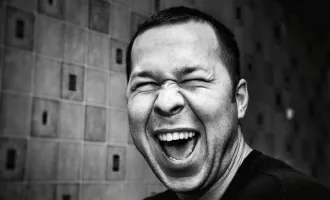
This Date in UCSF History: The Legend of Lunar New Year
Originally published in Synapse on January 31, 2006.
Every year in January or February, when the last page of the lunar calendar is torn off, people stay up all night on New Year’s Eve, light fireworks and put up Spring Festival Couplets — wishes written on two strips of red paper — on their doors.
An essential part of the Lunar New Year celebration is the Lion Dance, an act performed by two martial artists hidden under a giant lion costume.
Probably everyone living in San Francisco has seen the Lunar New Year celebration, but do you know where these traditions come from?
A long, long time ago, as this is how most folk tales begin, New Year’s Eve was an extremely dangerous time for Chinese people. A monster called “Nian” (pronounced the same as year in Chinese) always appeared as the night fell on the last day of the year and ate anything alive it encountered.
There were no celebrations that day, and people hurried to hide in the woods before the sun went down. One year, an old man arrived at a village on New Year’s Eve and wanted to stay there for the night.
Afraid of the monster, the villages advised him to hide in the woods with them, but the old man insisted on staying in the village.
At midnight, the monster came riding on black clouds. Just as it set foot inside the village, the monster saw bright red lights, as if the village were on fire.
The monster heard loud explosive sounds, as if thunder were coming at it. The monster also felt the Earth shaking, as if the ground were going to fall apart. The monster trembled in fear and ran away as fast as it could.
When the village people returned on the second day, they thought they would find the poor old man’s body. To their surprise, they found the old man standing in front of the village, laughing.
Before they could say anything, a five-colored lion came from the sky. The old man transformed to his real identity, the Mountain God, and rode away on the lion.
The villagers then realized the old man was the Mountain God who came down to help them.
They gathered the three precious items the Mountain God left behind: the fireworks, the light, and the Spring Festival Couplets.
Each year, they stayed up on New Year’s Eve, lit all the lights and the firework, and put Spring Festival Couplets on their door. Magically, they never saw the monster again.
The tradition was passed on generation to generation.
Later, people tried to imitate the five-color lion the Mountain God rode, thus inventing the Lion Dance. Today, one can still see all four traditions in a Chinese New Year celebration.



